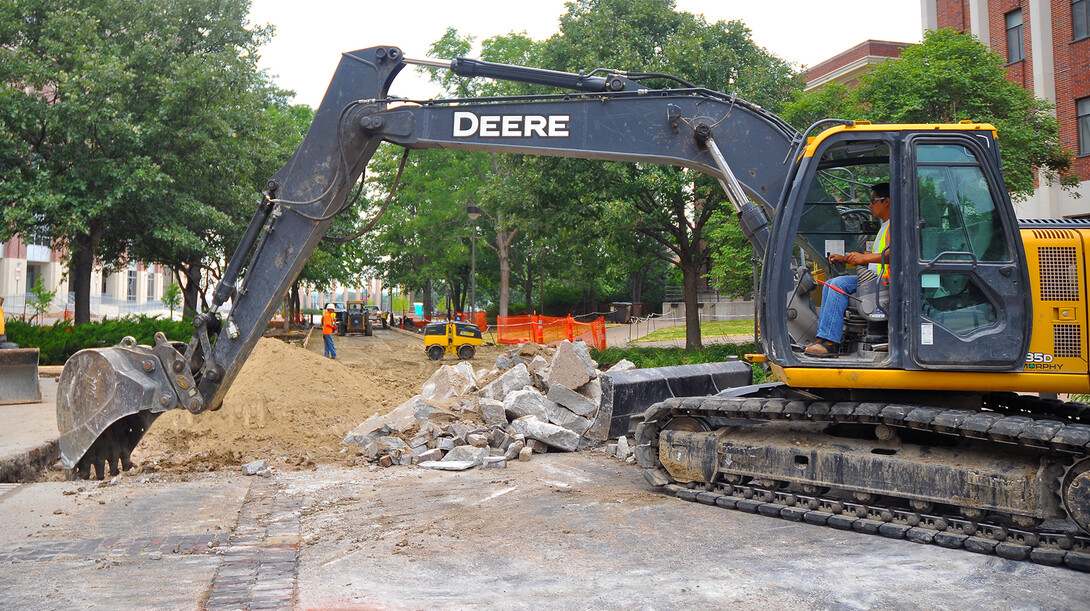
Seasonal sidewalk repairs on City Campus include the creation of UNL’s first bike-specific lane.
The initial stretch of the lane is included in the replacement of concrete this summer on the 12th Street mall, from Bessey Hall to T Street (by Burnett Hall). The middle stretch of the mall, from Bessey to the College of Business Administration, was replaced in summer 2012. The project will extend the new sidewalk/bike lane to the end of the mall at R Street next year.
The creation of specific lanes for walking and biking are part of the UNL master plan. The lanes were identified as priorities for both the 12th and 14th street malls. Work has not started on the 14th Street mall.
“When all is said and done, the separate pedestrian and biking lanes are a good way to improve public safety,” said Brian Larson, project manager for Facilities Management and Planning. “By the end of next summer, we will have the first lane complete along the entire stretch of the 12th Street mall.”
Work this summer is being divided into two parts to allow for access to nearby campus buildings. The first phase is from the Vine Street Mall to the north side of Oldfather. The second phase stretches from Oldfather to Burnett halls.
Larson said this fall modifications will be made to extend the bike lane through the middle stretch of the mall (Bessey to CBA). The remainder of the 12th Street mall will be replaced in summer 2015.
Once complete, the entire 12th Street mall bike lane will be marked to help with identification. Emily Casper, landscape architect with Facilities Planning and Construction, said the design elements of the bike lanes are being finalized.
“We’re working to identify design elements that work best with our existing landscape design,” Casper said. “The final design won’t necessarily look like other bike lanes around Lincoln. But they will be easily identifiable as bike lanes.”
This summer, the concrete work is part of a larger project that includes a variety of sidewalk repairs on City and East campuses, including replacement of curb ramps that are not compliant with a recent update to the American Disabilities Act.
The newly designed curb ramps are wider and feature detectable warning strips, which are black plates with raised bumps that help blind and vision impaired detect the intersection/curb.
“We’ve knocked out 25 of the ramps that were not ADA compliant so far, and continue to work on them,” Larson said. “We are also replacing broken and heaved areas of sidewalk on both campuses.”
Larson said the ultimate goal is to replace damaged concrete sidewalks and curb ramps in high-traffic areas before the fall semester opens on Aug. 25. Other campus concrete replacement projects will continue into the fall as weather permits.








